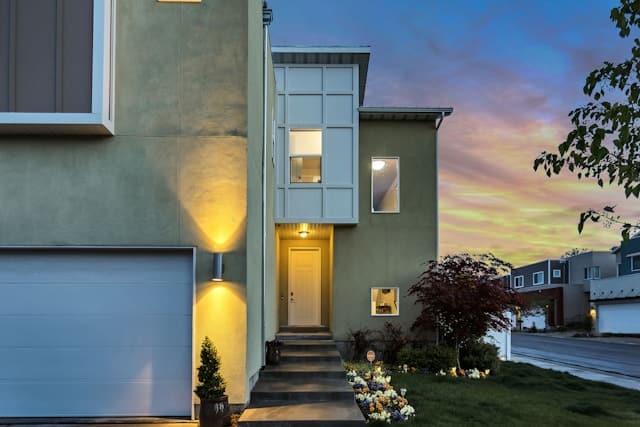What Strategies Can Maximize Space Utilization in London’s Narrow Residential Properties?

London is a city that shines in its architectural diversity. From towering skyscrapers to quaint cottages, the city is a veritable kaleidoscope of buildings. However, this rich tapestry of architectural wonders is not without its challenges. The city’s demand for housing is high, making space a precious commodity. In many urban residential areas, properties are often narrow and compact. This article dives deep into exploring the strategies that can maximize space utilization in London’s narrow residential properties.
Redefining Space With Multi-Functional Furniture
Furniture plays a significant role in how we utilize our living spaces. For compact urban properties, furniture that serves multiple purposes can be a game-changer. A bed that can transform into a desk during the day, or a wall-mounted dining table that doubles as a workstation, are examples of multi-functional furniture that can optimize space.
A lire en complément : How to Achieve Zero Carbon Emissions in a Large-Scale UK Office Refurbishment?
When considering such furniture options, it’s crucial to keep the room’s overall design in mind. The furniture should seamlessly blend in with the rest of the space and not hinder movement. To ensure a harmonious look, consider hiring a professional designer who understands the dynamics of small-space living.
Using Vertical Spaces Wisely
Vertical spaces are often overlooked, but they offer a wealth of possibilities for maximizing room use. Consider, for example, the wall space above your kitchen counters or around your windows. This area can be transformed into storage shelves, bookcases, or even a mini indoor garden. This strategy not only frees up valuable floor space but also adds to the aesthetic appeal of your home.
Cela peut vous intéresser : What is the Process for Converting a UK Industrial Site into a Residential Complex?
Another way to use vertical spaces is by installing floor-to-ceiling curtains. These create an illusion of larger windows and a higher ceiling, giving the room a more spacious and airy feel. Remember, the key to maximizing vertical spaces lies in strategic planning and innovative design.
Embracing Open-Plan Living
Open-plan living is no longer just a trend; it’s a practical solution for small spaces. By removing unnecessary walls, you can create a unified, spacious area that serves multiple functions. For instance, your kitchen, dining area, and living room can coexist in one harmonious space.
While open-plan living may offer a multitude of benefits, it’s essential not to compromise on privacy. You can use room dividers, curtains, or even furniture to create distinct zones within the open space. It’s all about finding the right balance between functionality and comfort.
Letting Natural Light In
Natural light has a transformative impact on small spaces. It not only makes a room look bigger but also adds a sense of warmth and positivity. Therefore, maximizing natural light should be a key consideration in your space utilization strategy.
Think about replacing solid exterior doors with glass ones or install skylights, if possible. If structural changes aren’t feasible, consider using mirrors strategically to reflect natural light into darker corners. Remember, a well-lit room not only appears larger but is also more inviting and comfortable to live in.
Implementing Efficient Energy Systems
As buildings become smarter, energy systems have evolved to meet the unique needs of urban living. For example, compact, efficient heating and cooling systems that occupy less space can be a boon for small residential properties.
Besides, integrating renewable energy systems, like solar panels, can reduce dependence on utility power, lowering your energy bills. You can also consider installing energy-efficient appliances that are designed specifically for small spaces.
In the face of a housing crunch, maximizing space in London’s narrow residential properties has become a necessity rather than a choice. By combining creative design, smart furniture choices, and efficient energy systems, you can transform a small space into a comfortable and functional home. While these strategies require careful planning and consideration, they offer a solution to the ever-increasing demand for space in London’s urban landscape. Remember, it’s not just about making the best use of available space, but also about creating a living space that mirrors your lifestyle and needs.
Creative Partitioning and Storage Solutions
Partitioning is a must when it comes to maximizing space in narrow residential properties. In urban cores like London, room ideas that incorporate efficient partitioning can dramatically alter the way the space is perceived and used. For instance, sliding doors or movable partitions can be used to divide a room into separate spaces, such as an office space and a living room. They offer flexibility, allowing for privacy during office attendance and an open feel when not in use.
Storage is another critical consideration for small living. Built-in storage solutions like under-bed drawers, lofted beds with wardrobe space beneath, or window seats with hidden compartments can save lots of space. A little creativity can go a long way in integrating storage into the overall design, ultimately leading to the efficient use of every available inch.
Just as partitioning and storage solutions need to be functional, they also need to integrate with the overall aesthetic and design of the house. Engaging a professional for advice can be beneficial, as they may offer insights and ideas that align with your personal taste and lifestyle requirements.
Efficient Use of Outdoor Spaces
Outdoor spaces, if available, can be a blessing for narrow residential properties. A well-designed patio or balcony can serve as an extension of the indoor living space, offering a breath of fresh air in the bustling superstar cities like London, San Francisco, or New York City.
Consider using multi-functional outdoor furniture that can be stored away when not in use. Vertical gardens, compact grills, foldable picnic tables, or hammocks can turn your outdoor area into an inviting, functional space. It can also serve as an excellent area for entertaining, increasing the perceived space of the property.
Remember, in urban landscapes, outdoor spaces can also be a source of natural light. Strategic planning around window placement can ensure that your indoor spaces are well-lit, creating a sense of openness within.
Conclusion
The increasing demand for office and living spaces in superstar urban cores like London calls for innovative solutions. From multi-functional furniture to the efficient use of vertical spaces, and from creative partitioning to efficient use of outdoor spaces, there are various strategies that can turn narrow residential properties into spacious, comfortable homes.
Furthermore, letting in an abundance of natural light and implementing efficient energy systems are not only environmentally friendly but can also make small spaces appear larger and more inviting.
Space utilization in narrow residential properties is a necessity in today’s real estate market. With vacancy rates being significantly lower in cities studied, like London, every available space needs to be used effectively.
In conclusion, the goal is to create a living environment that is not only practical but also reflects your lifestyle and preferences. As every small space offers unique opportunities, it’s about finding imaginative, personal solutions that make your home feel larger than it is. With a little creativity and planning, you can transform your small property into your dream home, regardless of its size.
